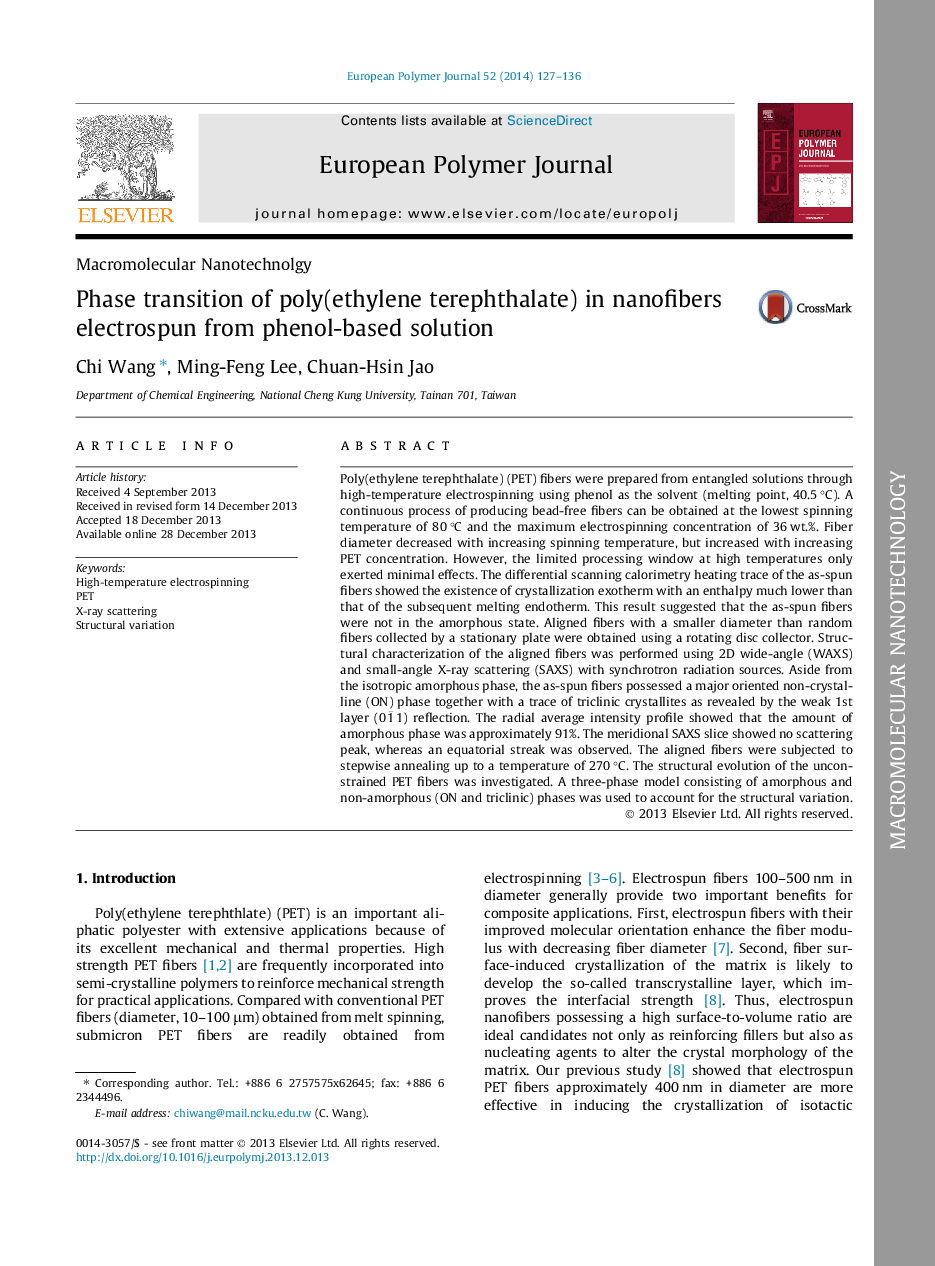| کد مقاله | کد نشریه | سال انتشار | مقاله انگلیسی | نسخه تمام متن |
|---|---|---|---|---|
| 1395665 | 1501383 | 2014 | 10 صفحه PDF | دانلود رایگان |

• PET nanofibers are electrospun from phenol solutions at high temperatures.
• Phase transition of PET in nanofibers during progressive heating is studied.
• A three-phase model is applied to account for the structural variation.
Poly(ethylene terephthalate) (PET) fibers were prepared from entangled solutions through high-temperature electrospinning using phenol as the solvent (melting point, 40.5 °C). A continuous process of producing bead-free fibers can be obtained at the lowest spinning temperature of 80 °C and the maximum electrospinning concentration of 36 wt.%. Fiber diameter decreased with increasing spinning temperature, but increased with increasing PET concentration. However, the limited processing window at high temperatures only exerted minimal effects. The differential scanning calorimetry heating trace of the as-spun fibers showed the existence of crystallization exotherm with an enthalpy much lower than that of the subsequent melting endotherm. This result suggested that the as-spun fibers were not in the amorphous state. Aligned fibers with a smaller diameter than random fibers collected by a stationary plate were obtained using a rotating disc collector. Structural characterization of the aligned fibers was performed using 2D wide-angle (WAXS) and small-angle X-ray scattering (SAXS) with synchrotron radiation sources. Aside from the isotropic amorphous phase, the as-spun fibers possessed a major oriented non-crystalline (ON) phase together with a trace of triclinic crystallites as revealed by the weak 1st layer (0 1¯ 1) reflection. The radial average intensity profile showed that the amount of amorphous phase was approximately 91%. The meridional SAXS slice showed no scattering peak, whereas an equatorial streak was observed. The aligned fibers were subjected to stepwise annealing up to a temperature of 270 °C. The structural evolution of the unconstrained PET fibers was investigated. A three-phase model consisting of amorphous and non-amorphous (ON and triclinic) phases was used to account for the structural variation.
Figure optionsDownload as PowerPoint slide
Journal: European Polymer Journal - Volume 52, March 2014, Pages 127–136